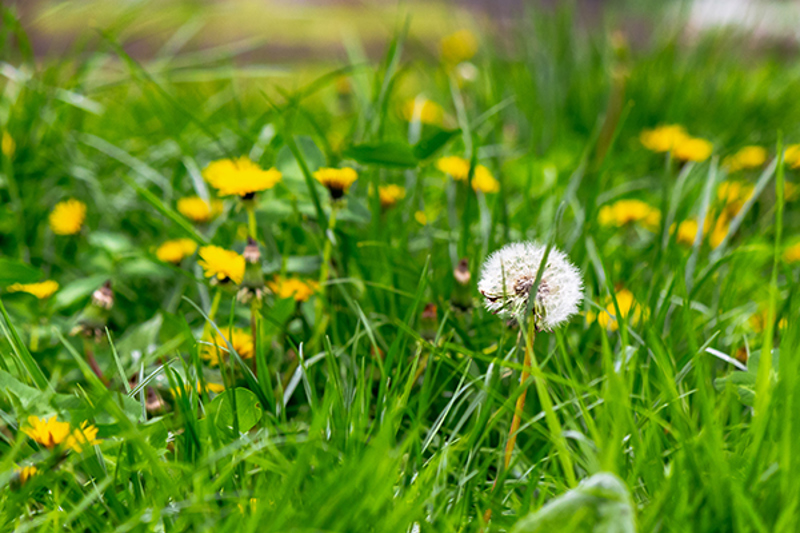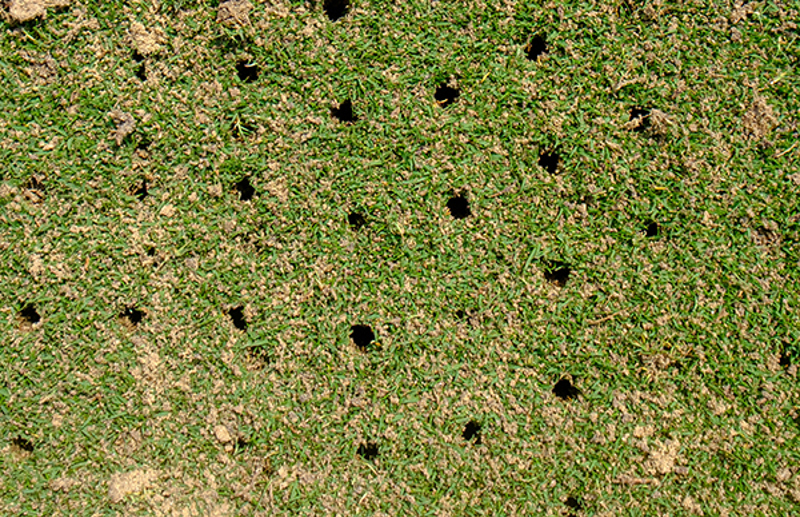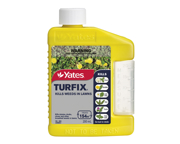Yates Account
Join now
Create a Yates account today!
Sign up to join the Yates Garden Club for monthly e-mails packed with seasonal inspiration, tips for success & exclusive promotions.
Plus if you’re a Garden Club member you can take part in the Yates Growing Community - a blog to share successes, get advice & win prizes in fun challenges along the way!

Forgot password
Enter the email address associated with your account, and we'll email you a new password.

Whack those Weeds!
Last spring, did you promise yourself that this year you’d get on top of your lawn weeds? Whoops!
Lawn weeds can sneak in under the radar. They start off small and inconspicuous, hiding in amongst grass blades. As lawn growth starts to slow in late autumn, weed growth can really take off - all of a sudden they seem to appear from nowhere.
Broadleaf lawn weeds like clover, thistles and dandelions take advantage of lawn grass' slower growth during the cold season. If they aren't controlled they can outcompete grass and become really noticeable in spring.
It doesn't need to be complicated or time consuming to create a weed-free lawn, you can easily control them with a selective herbicide. This is the type of weedkiller that removes weedy invaders without harming the lawn grass. Yates Turfix Lawn Weed Spray is our go-to choice to cull these weeds, and it's compatible with common NZ lawn types like Fescue, Browntop, and Ryegrass.
- The easiest way to control most common broadleaf weeds in lawns, before they begin to dominate, is with Yates Weed n Feed Double Action. Clicking it into the hose and spraying it on only takes minutes. Yates Weed’n’Feed is boosted with key lawn nutrients nitrogen and iron, which both promote a deep rich green lawn.
- If you only have a small patch of weeds or a lawn where using a hose-on applicator isn't practical, then you can apply some granular Yates Weed n Feed Double Action Granular. Apply the granules dry, onto moist grass and weeds, and leave for 2 days before watering in thoroughly. The lawn will turn black but will quickly recover to its normal state - but even lusher.
- As for Onehunga weed, children and pets will also appreciate a summer without prickly feet! If you had prickles in your lawn this summer, make sure you get Onehunga weed under control before it has a chance to flower and set seed in early spring...basically, you need to kill it before it flowers to stop the prickles from forming. An application of our Yates Prickle Weedkiller any time before early spring will prevent prickles for next summer - giving it an extra shot in autumn while the lawn soil is still warm will boost your results of your spring application.
- There are a few tricky and invasive lawn weeds that you'll need to call in the big guns for - native hydrocotyle and creeping oxalis are examples. To get on top of persistent weeds, choose Yates Hydrocotyle Killer for the job.

Feeding the lawn
Autumn is an important time to feed established lawns. This helps get them into top condition before the cold weather arrives; a well-fed lawn will also be greener, thicker and healthier. If your lawn's weed free and you only need to feed, Yates Lawn Fertiliser Quarterly Hose-on is a super easy option, without the smell of organic fertiliser.
The development of high-performing slow release lawn foods has made it easier to navigate the lawn's transition to winter. Your lawn grass and microbial soil community underneath it are in sync with the seasons - if the grass becomes dormant, the microbes are also snoozing. Because the nitrogen in slow-release fertilisers is 'unlocked' for grass by microbial action, this means the nutrition is only supplied at the rate grass can use it - as soil temperature falls and everything begins to slow down, grass nutrition also slows.
Slow release fertilisers perform well in autumn because they supply nutrients in time with the grass as it becomes drowsy; in comparison, a big surge of nitrogen in cold conditions won't be completely absorbed - the excess can remain in the soil and will eventually leach into groundwater. Slow release Yates Lawn Fertiliser Quarterly gently feeds for 12 weeks after application, so it's an excellent choice for autumn.

Spiking and aerating
Heavy traffic areas (e.g. where your kids frequently play, or the track to the washing line) frequently become compacted, which discourages water and nutrient uptake. If your lawn soil is compacted, your lawn will benefit from a good spiking. It's much easier to do while the soil is moist.
- Do this by energetically pushing a garden fork as far as possible vertically into the soil, wiggle the fork out, move forward a few centimetres and repeat, and keep going until you've spiked the whole lawn. The fork method is hard work, but it pays off! You can buy a specific lawn spike tool from your favourite garden tool retailer, which makes the job a bit easier. Choose one with a foot bar so you can use your bodyweight to push it in. Or, if you really want to save your back, you can hire a mechanical aerator.
- For heavily compacted soils, coring is the best remedy. This can be done by a hiring a coring machine, which removes ‘plugs’ of soil from the ground. While it can look a little unsightly, after a couple of mows, your lawn will bounce back and be all the better for it.
- If your soil type is clay-based an application of gypsum will help break up the clay, improving drainage and porosity.
- Another trick to aerate heavy moist clay is to use a small garden auger fitted into a strong battery drill. You can drill the auger in, reverse the drill and back it out to make a nice deep spiral aeration hole, which you can then sprinkle gypsum into. Like the fork method, it's a very laborious task to work your way around a lawn, but it creates an excellent result.

Let your lawn breathe
If you have deciduous trees that drop autumn leaves on your lawn, don't leave them sitting around. A layer of leaves blocks sunlight to the grass underneath, and prevents oxygen, water, and nutrients from getting where they need to go. And that means the lawn is more susceptible to fungal diseases and pests. Leaves make great compost, so rake them up early and add them to your compost bin.
















Share
Share this article on social media